Polk jury that convicted David Murdock of first-degree murder spares his life
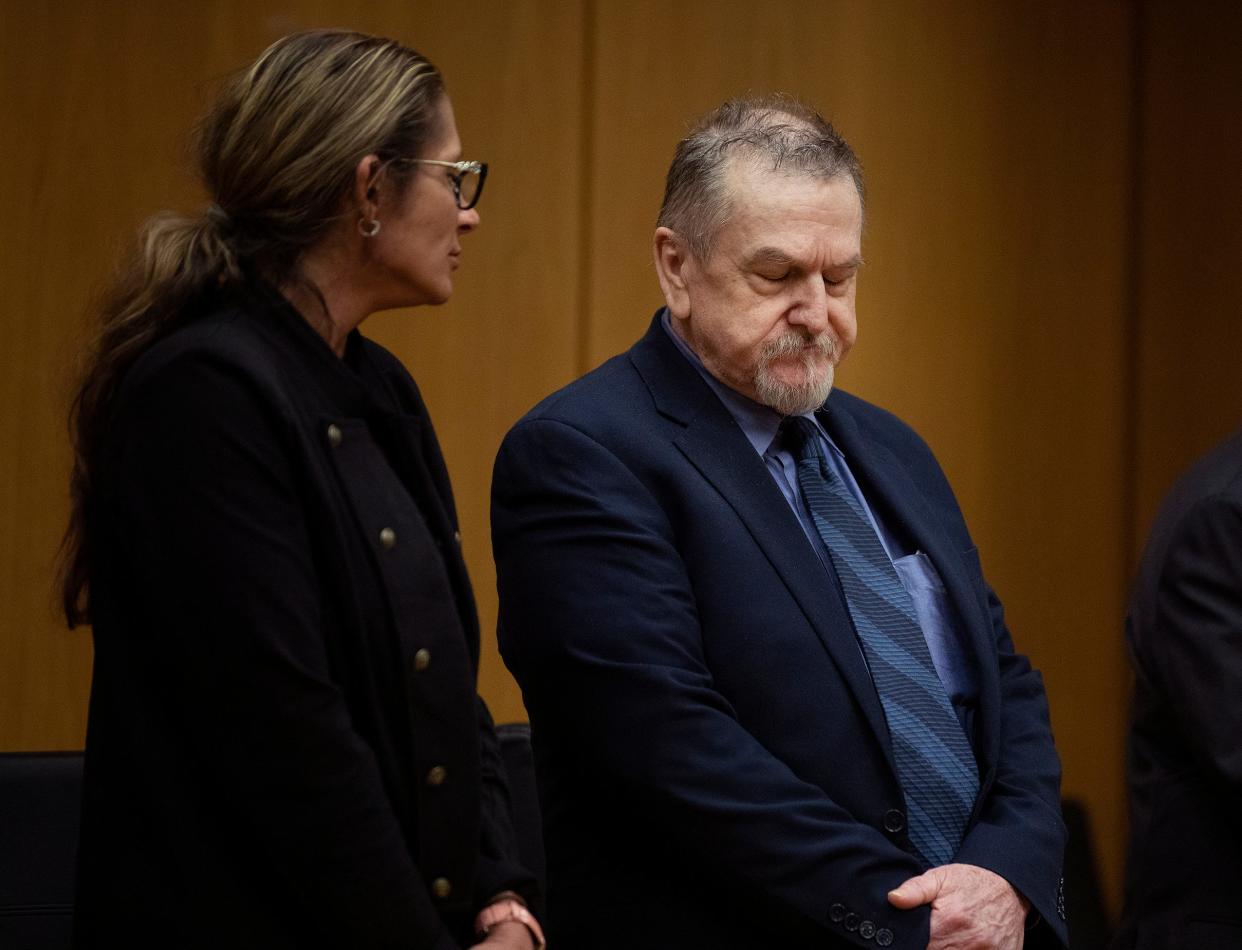
BARTOW — The same jury that found David Marshall Murdock guilty of first-degree murder on March 19 decided on Wednesday to spare him the death penalty and recommend he spend the rest of his life in prison for his crimes.
The jury's vote was not read in court, but they failed to reach the 8-4 margin needed to recommend a death sentence.
Murdock, 65, of Lake Wales was convicted of killing Lisa Bunce, 56, on Jan. 5, 2019, while she was in Haines City visiting her friend Sanda Andrews, 71.
The best friends had often traveled back and forth like snowbirds from their homes near Toledo, Ohio, to Florida, where they stayed at Andrews' residence in the Sweetwater Golf and Tennis Community.
Trial evidence showed Murdock shot Bunce, his ex-girlfriend, with a 9-mm Glock handgun loaded with hollow tipped bullets, after also wounding Andrews with a gunshot to her face as the women sat inside the Florida room of Andrews’ home.
Bunce was wounded in the initial gunfire, and during her attempt to escape, she had left blood smeared down the hallway and blood on a doorknob that helped lead him to her hiding place, according to evidence at his trial.
Murdock had entered an unlocked side door, and he followed the trail of blood to find her and shot her two more times as she hid in a master bedroom closet, prosecutors said. The fatal shot had entered her chest and killed her within two minutes.
On March 19, the jury also found Murdock guilty of three other charges, including a lesser charge of second-degree attempted murder for shooting Andrews, as well as burglary of a dwelling while armed with a firearm and discharging a firearm into an occupied dwelling.
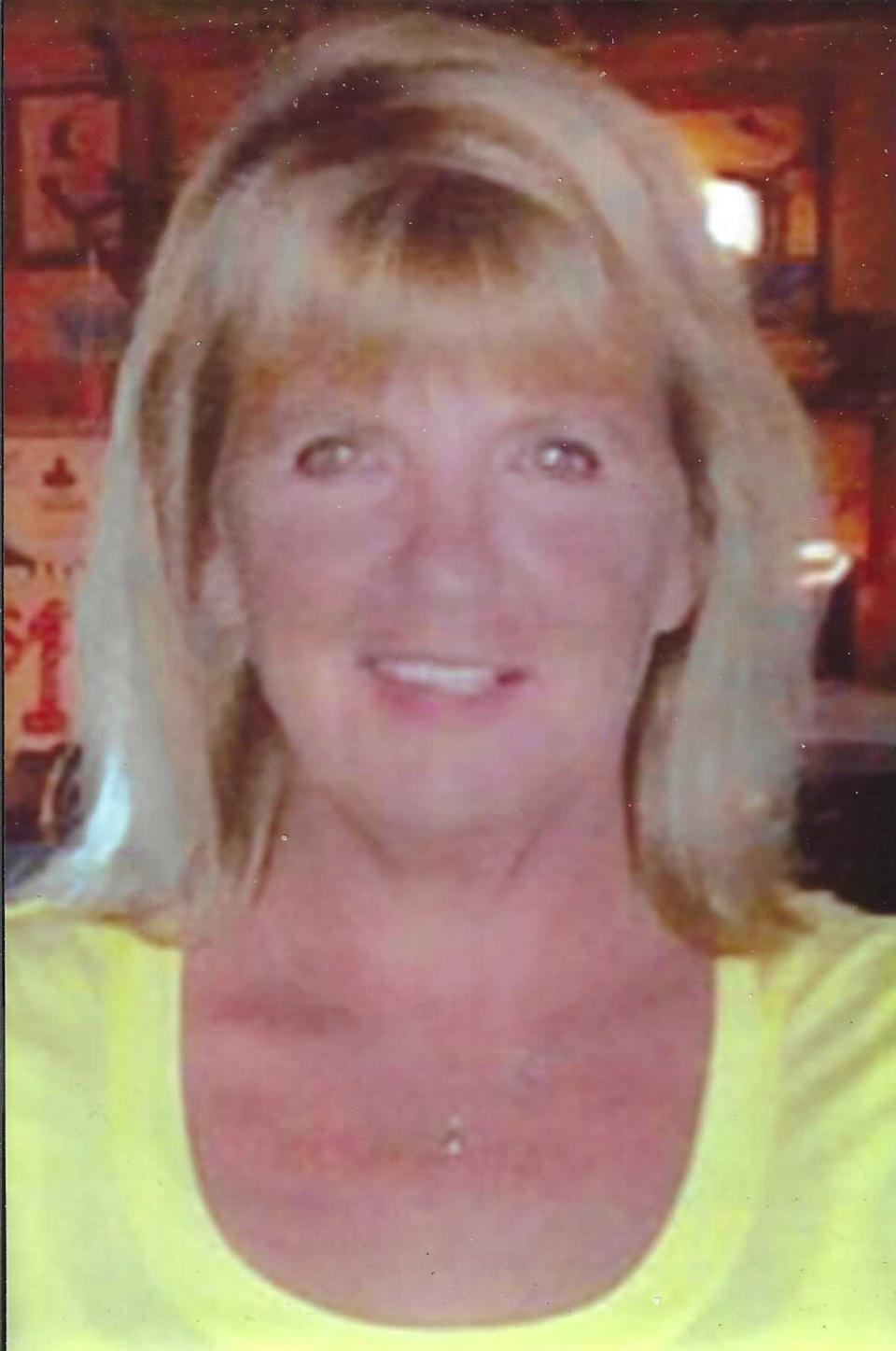
Since his arrest, Murdock has maintained he blacked out and cannot recall what he did the night of the shootings. And he's said that because of mental illness and childhood abuse, he has nightmares about a monster he refers to as the devil.
After the shootings, Murdock went to the front yard of the home, tossed the handgun aside, dialed 911 and told the call taker, “I had to get rid of the devil. I am sitting out by the lights. I’m not leaving. I’m sorry. I had to get rid of the devil,” according to trial evidence.
Closing Statements
Before the jury handed down its sentencing recommendation on Wednesday, the prosecution and defense had each offered closing statements to the 12-member jury of one man and 11 women.
The two sides focused on aggravating factors and mitigating circumstances, respectively.
The prosecution argued that Murdock’s crimes were cold, calculated and premeditated, and heinous, atrocious and callous, among other factors, which Assistant State Attorney Bonde Johnson said the jury should consider before he asked them to recommend the death penalty.
During the trial, the prosecution had presented evidence to show Murdock exhibited premeditation because of the more than 20-minute drive from his home to Andrews’ home, entering the gate code at the entrance to the age 55-plus community and then his pursuit of Bunce inside the home.
“Through the blood, every step, every second, is heightened premeditation,” Johnson said. After finding Bunce, Johnson said, “Maybe you stop now. She’s injured. Call the police. But he pulled the trigger two more times.
“That is heightened premeditation,” he added.
Johnson also attempted to counter mitigating circumstances by attacking the claim of Murdock’s mental illness. He said only one medical record over 60 years revealed he ever reported feeling depressed.
Murdock's alleged multiple hospitalizations for mental illness were self-reported. And he had not checked the mental illness box on the renewal form for his concealed carry permit.
Johnson continued, saying Murdock also was married, raised children and was a hard worker, who obtained a commercial driver’s license to drive a truck and graphed citrus trees to earn a living and support his family.
“Look at all that evidence. Is that consistent with major mental illness?” Johnson asked the jurors.
He added, “The only time the defendant became mentally ill was after his arrest for first-degree murder.” While incarcerated, the first treatment center he attended discharged him for malingering, and medical records of mental illness don’t exist, Johnson said.
He went mute (an indication of mental illness) during his incarceration, but there were phone calls to conduct personal business regarding belongings at his house that involved Murdock, Johnson said.
“He had the ability to appreciate the criminality of what he did,” he said.
Johnson also recalled trial evidence showing that despite having a new girlfriend, Murdock had been texting with Bunce and his new girlfriend discovered 32 texts with Bunce.
When his new girlfriend confronted him about the texts, Murdock said, “She shouldn’t have done that.” And then left for Andrews’ home and later shot the women.
“Well, I’m sure he was angry because he was busted, and he got called out.” Johnson said. “Was it extreme mental or emotional disturbance? He had over 20 minutes to think about it. He chose to keep going and kill Lisa Bunce.”
Mitigating circumstances
During the defense closing for the penalty phase, defense attorney Daniel Hernandez said Murdock had tried to live a normal life for 60 years before the day of the shootings, but there were more than a dozen mitigating circumstances that dogged him for a lifetime.
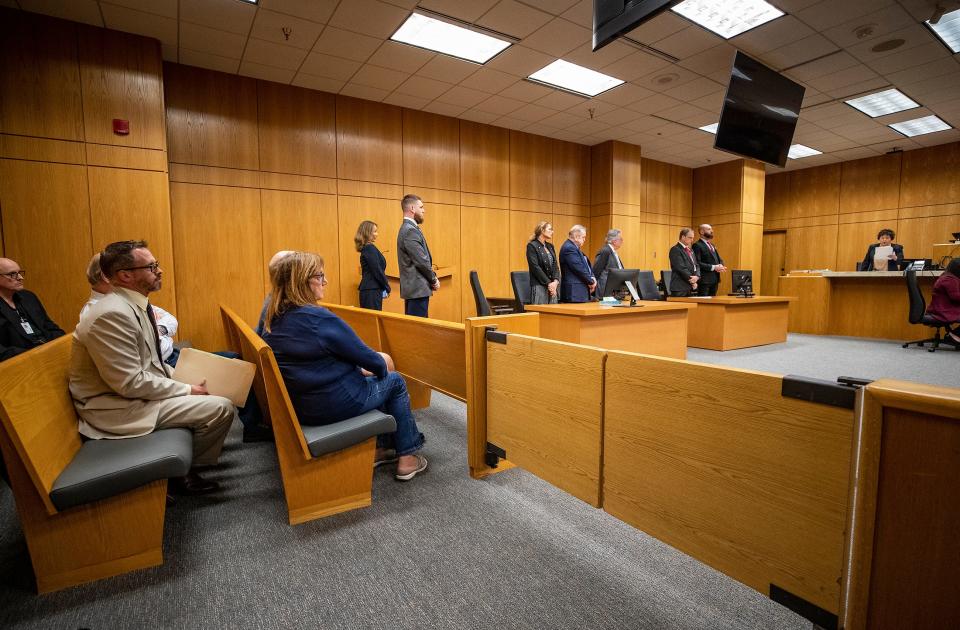
Mental illness was one. Among others he suffered from head injuries during child abuse, football, a motorcycle accident and boxing matches. He was poorly educated and malnourished.
Murdock had suffered from physical, sexual and emotional abuse throughout his early childhood, and he had suffered from mental illness for decades despite appearing normal on the outside to family and employers.
He also had never committed a felony offense prior to the shootings. And because he has serious health issues, either sentence could achieve the same effect, as death penalty appeals can last years.
“His age and medical condition is something for your consideration,” Hernandez said.
Further, he also is no trouble as a prisoner. And he has loving relationships with his family and wants to continue those relationships for his remaining years, Hernandez said.
Hernandez also asked the jury to consider whether the defendant was under extreme mental or emotional stress and could not appreciate the criminality of the felony offenses.
“There are ugly facts here,” he said. “This is not a shoplifting case where nobody gets hurt and in no way, and in no way, am I minimizing what happened to Ms. Bunce or Ms. Andrews. They are tragic events that happened.”
However, Hernandez said, “Despite there being two victims, this was a single event. This is not a serial killer situation or someone who goes on a crime spree, who goes around committing murders. There is a difference in this case.
“We have ugly facts here, it’s not being denied here,” he said. “But I suggest to you these facts, though as ugly as they may be, are not the worst of the worst. And I am suggesting to you that the death penalty should be reserved for the worst of the worst.”
While acknowledging frequently that the victims suffered horrific pain and suffering, Hernandez said Medical Examiner Stephen Nelson in thousands of autopsies has seen much worse cases, including signs of torture or a person being alive for a lot longer period and even kept alive on purpose, which was not a finding in his autopsy of Bunce.
Further, he said there was no evidence of premeditation, planning nor substantial reflection on the crimes.
Abusive childhood
On Tuesday, Murdock took the witness stand for the second time during the trial. Between crying spells, he provided the jury with explicit details of sex acts he endured as he was raped and sexually assaulted during childhood.
Also as a child, he witnessed domestic violence in the wooden two-bedroom home in the Winter Haven area that he shared with his siblings, his mother and a stepfather, he testified. Murdock also was the target of physical and emotional abuse in the home and several times on the stand he slapped his hands together loudly to accentuate the trauma he heard or felt.
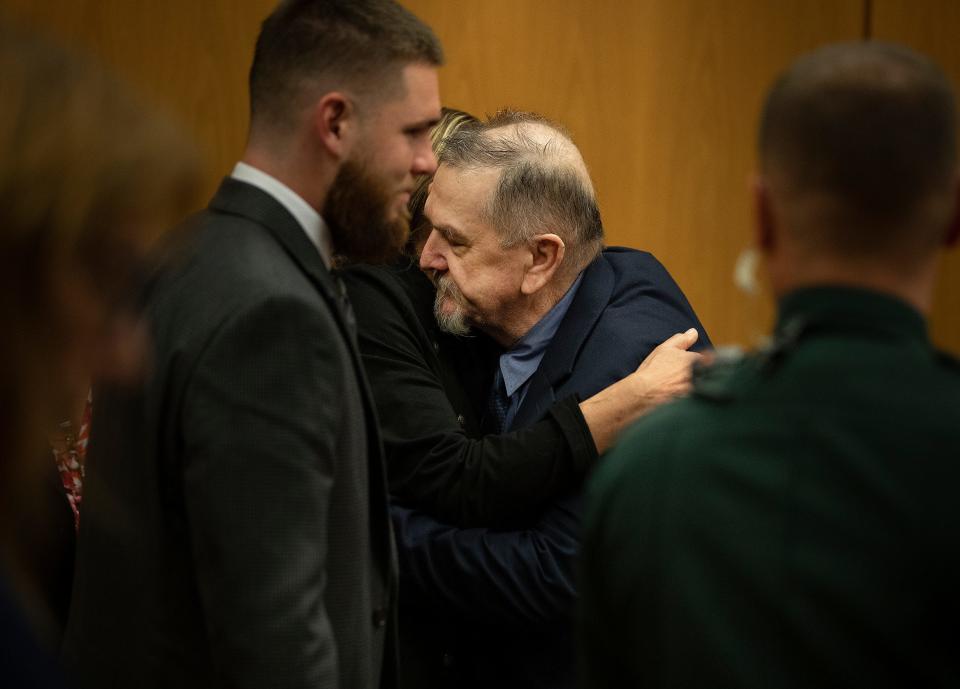
The physical abuse started at age 4, when he was punched in the eye for playing with matches and setting magazines on fire in a back room of the house, he said.
The sexual abuse started at age 6. He said he also saw his sisters taken to a bedroom where he had realized when he was older they too were sexually assaulted.
At one point he said, there was usually no food in the home, and on at least one occasion, he and his sisters were told to eat food like a dog that had been thrown in the backyard.
He recalled sleeping in the backseat of a car during middle school as the family moved around frequently. He attended multiple schools throughout Polk County and quit attending high school in the 10th grade.
At another point, he and his siblings ran away from the home to escape the abuse, but another family member turned them away and they were taken to foster care when he was 12, he said. Murdock returned to his mother’s house at age 13 and left home for good at age 15.
His abuser was never charged, accused nor prosecuted with any crimes as a result of the abuse, he said when asked by Hernandez. There was a court proceeding on child abuse allegations but the judge decided not to prosecute the abuser.
On the stand, Murdock also apologized in a prepared statement he removed from inside his suit coat and read for the victims of his crimes, including Bunce’s family members.
“I apologize not from the bottom of my heart, but with all my heart,” Murdock said.
He then apologized for the harm he caused Andrews and said only God witnessed the crimes he was convicted of doing and that he would have to face God on judgment day for those actions.
In a fiery exchange with Murdock, prosecutor Johnson said in a raised voice, “Where was this mercy on Jan. 5, 2019, when you gunned down two innocent people in their home? Where was it?”
Talking over Johnson, Murdock said, “I didn’t kill no one knowingly. No one knowingly did I gun down.”
As Johnson projected autopsy photos on the screen showing the bullet wounds Bunce had suffered, he said Murdock did not look at the photos when he took the stand in the first phase of the trial.
“Look at it,” Johnson shouted. “You did that. And you won’t look at it because you know you were wrong.
“Everything you just testified to is just an excuse.” Johnson added. “That’s not remorse.”
Hit and run: FHP: Lakeland man arrested after crash kills Bartow High School student
And he said Murdock’s lack of memory about the shooting was “conveniently missing” yet he recalled the blonde hair of a social worker who had visited his childhood home and the label on the bottle of beer he was drinking the night he first met Bunce at a bar.
Mitigation
Earlier on Tuesday, Murdock’s defense team also had called family members who corroborated most of his statements he had made of the physical, sexual and emotional abuse he suffered, including a daughter, a son and a sister. They also said they knew he suffered with a monster but he never spoke about his abuser.
A Miami Beach clinical psychologist testified that Murdock hid his mental illness from his family, friends and employers to avoid potential repercussions. But he often described “a monster” or devil he has seen since his childhood in nightmares as well as suffering audio and visual hallucinations.
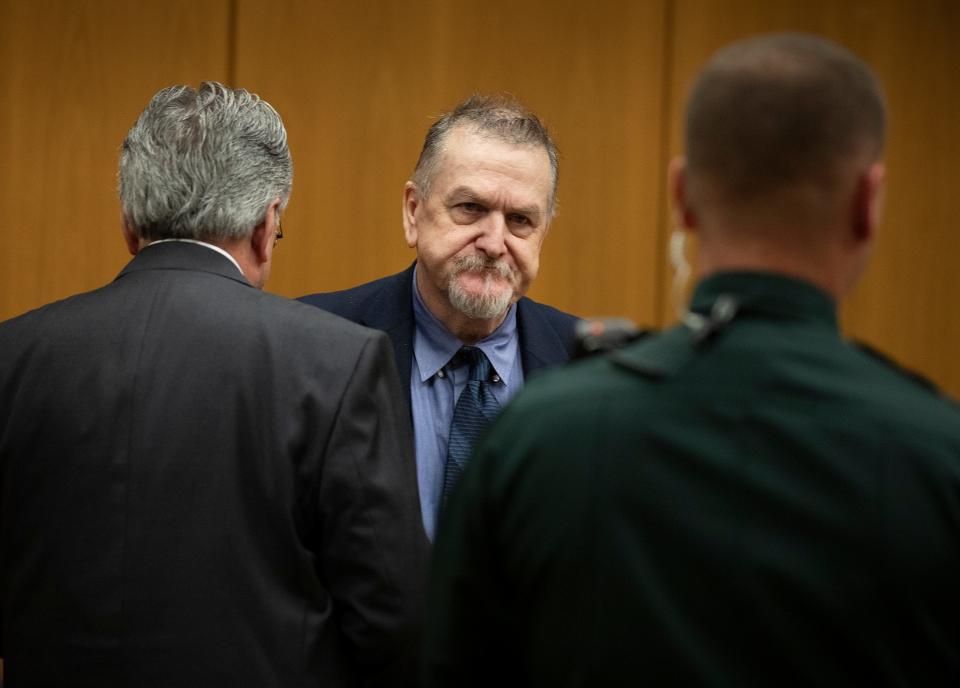
Neuropsychologist Hyman Eisenstein had spent more than 25 hours interviewing Murdock starting the year after he was arrested as well as administering a battery of tests.
He first interviewed Murdock in Indiantown at the Treasure Coast Forensics Treatment Center where Murdock spent the first year after his arrest. Eisenstein said Murdock was initially mute and catatonic but over time he was returned to the Polk County Jail in Frostproof.
Eisenstein said he conducted tests first to determine whether he was malingering and he was not, so testing continued. He was diagnosed with paranoid schizophrenia, a cognitive disorder and depression. His IQ was 103 within the average range of intelligence.
He also reported childhood trauma to the psychologist. At one point, Murdock told him his parents were made to appear in court for suspected child abuse, but the judge decided not to prosecute because the parents would have to be institutionalized.
Murdock had several marriages starting at age 16, Eisenstein said. During a fourth marriage of 25 years, “Mr. Murdock stated that he loved her and was afraid he might hurt her due to his encounters with the devil, the monster that he refers to, so he left her.”
Hernandez then asked, “Did Mr. Murdock make reference to the devil on more than one occasion regarding his personal history?”
Eisenstein said they discussed the devil and the monster on “numerous occasions.”
The clinical psychologist also reviewed medical, school and employment records and the indictment against him. He also interviewed his family members.
Victim impact statements
One by one, nearly a dozen victim impact statements were read from a podium in court facing the 12-juror panel. Some read them in person, others through a spokeswoman but all described the murder victim, Bunce, as the fun-loving rock that held together a large and extended family.
At one point during the statements, a juror signaled to the judge they needed a box of tissues. Murdock himself hid his tearful eyes as the emotional statements were read.
Her shocking and violent homicide left physical and mental illness among her relatives, including several of her relatives who said they have required hospital visits for mental illness and heart attack-like symptoms caused by post-traumatic stress disorder and panic attacks. Some have struggled to form new relationships because of anxiety disorders.
Most were family members, including a sister, her children, grandchildren and nieces and nephews. They recalled pool parties, camping trips with smores, Christmas cookie making parties and trips to theme parks with Bunce.
In one statement, the tearful spokeswoman read, “He (Murdock) was not getting rid of the devil, he took the wings off an angel.”
Jury weighs in
Prior to deliberations, the jury was instructed by Circuit Judge J. Kevin Abdoney that they must come to a unanimous decision on at least one of four aggravating circumstances in order to consider a death sentence. They voted yes on two but no on the other two.
They voted yes that the first-degree murder was committed during the felony offenses of a burglary with a firearm and the crime of attempted second-degree murder. They also found the prosecution had not met the burden of proof for the two other aggravating factors.
A post-conviction hearing was set for 3 p.m. April 19, when Abdoney is expected to sentence Murdock to life in prison.
Outside the courtroom, Murdock’s defense team was happy about the sentence recommendation by the jury. But they said they still intend to appeal the first-degree murder conviction.
This article originally appeared on The Ledger: Polk jury that convicted David Murdock of murder recommends life sentence